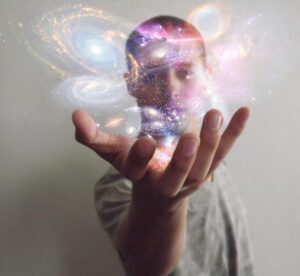Be completely at ease with yourself. There is no reason why you should not love yourself unconditionally. You can start right now – you do not need any reason.
I have learned how to love myself (almost) unconditionally, but that doesn’t mean I have stopped trying to change. I can love myself completely and wholly, even though there are aspects of me I want to change. We are built to move forwards. Moving forwards is a part of the human experience. You could say that we ARE change. Loving ourselves unconditionally is to embrace change and to guide it in the present moment.
Do you wish you were more confident? Maybe you wouldn’t say no to a touch of more extraversion in your personality. Or maybe you wish you were more efficient in your work life. It is possible to change and some of the answer to how lies in the branch of psychology called the phenomenological–humanistic perspective on personality.
An Exciting Psychological Theory
The phenomenological-humanistic perspective on personality is in part an answer to Sigmund Freud’s theory that people are driven by the unconscious.
The theorists in this camp think that our personalities are largely formed by our conscious experience of the self and our environment. They focus on phenomenon, phenomenology, and not on our unconscious drives and desires – the present and not our past. They have a positive view of humanity and regard themselves as humanists. They also focus on our inherent ability for creative growth and our striving for personal growth [1].
There are two main arms of the phenomenological-humanistic perspective on personality – George Kelly’s Personal Construct Theory and Carl Roger’s Theory of the Self.
Change Your Personal Constructs and Feel the Change
George Kelly’s central idea is that people seek to make meaning of the world and also to find personal meaning. A failure to do so results in anxiety and uncertainty. The main way people make meaning of the world is to predict and anticipate what will happen. They also make meaning of the world by explaining it.
 His main interest was how people create “personal constructs”.
His main interest was how people create “personal constructs”.
He explained this as our own constructed cognitive categories where we place events and people. He believed that these personal constructs are the main differences between people’s personalities. Some of these categories could be called good, bad, powerful, motivating and evil. Kelly believed that we could understand the person’s psychology if we understood his or her personal constructs, the rules they imposed on them, how they related to each other and the importance they assigned to each category.
People can interpret different events and people in widely different ways. Kelly thought it important to find the category people put events in, and then evaluate the results of this categorisation. If the results were bad, you should change the categorisation and if the results were good – keep on doing it.
We can’t know whether the personal constructs are good or bad, as they are entirely subjective.
Psychoanalysis, to Kelly, was about finding the personal constructs, evaluating them and making it clear that they are not facts, but merely hypotheses. When the patient understands that they can start testing them, and replace the hypotheses that are not working to their advantage. Anything can be reframed. There are infinite possible interpretations of reality.
One way Kelly tried to help his clients was with a technique called fixed role therapy. This involved playing out roles and scripts laid out by Kelly over several days. One example might be for a shy person to play the role of a confident person for 3 days. In this way, shy people could get first-hand experience of different behaviours, and possibly find new behaviours that are positive to their lives and so adopt them.
Putting It to Action by Testing Your Hypotheses
Your personal constructs are only hypotheses. Realise this and you hold half the key. The other half is to test your hypotheses about the world with an open mind. Be open to other possibilities. Look for the results of your hypotheses. Your hypotheses might be that you just had an argument with your spouse, because he or she is behaving in a stupid way. If you react as if this is true, know that you are testing that hypothesis and see what the results are.
Is it making your life worse? Try changing the hypotheses to “I just had an argument with my spouse because I do not fully understand what she meant”. Then test that hypothesis. Is it making your life better? Then why not adopt it? Stubbornness leads nowhere. Openness leads to the deeper parts of the human experience.
You can also test the hypotheses of your personality. Maybe your hypothesis is that you don’t like social gatherings. Test the hypothesis of being a person that loves social gatherings. Identify 3 key behaviours of people who love social gatherings and take them on for a day or three.
What you find might surprise you – or not. The point is to test our hypotheses and not view them as absolute truth. Use fierce self-love as the foundation on which you test.
Change by Removing Your Blocks
The main idea behind Carl Roger’s Theory of the Self, is that we already have within us everything we need to grow and evolve. When there is nothing in the environment that blocks us or distorts our natural inborn forces, we are naturally directed towards actualisations. His central concept is the self – an organised and consistent set of beliefs and perceptions about our abilities and qualities.
The self has two dimensions: First our self-concept, which is our perception of our self, and second, an internal identity that directs and governs our actions and behaviour.
 If we have a certain image of ourselves, for example that we are confident or unlovable, we will act to continually test our hypothesis.
If we have a certain image of ourselves, for example that we are confident or unlovable, we will act to continually test our hypothesis.
Success is when people react to us as either confident or unlovable. This confirms our beliefs about ourselves and reinforce our behaviours. We are actually pushed into behaving in a manner consistent with our beliefs, because of our need for self-consistency.
This can manifest as beliefs about how our friends view us. We therefore behave in the way we believe they expect us to, to not appear inconsistent or incongruent with their image/beliefs. The beliefs we project on our friends are probably a result of our own beliefs about ourselves.
When we are rigid in our beliefs about ourselves, we tend to become more maladjusted and less open to our experience of the world. When there is a large mismatch between our experiences and our self-concept, our beliefs might temporarily break down and result in anxiety and disorganisation of the self.
When we are born we have no self-concept, but over time our self-concept becomes more set. Any incongruence between our experience of reality and our concepts of reality is then interpreted as a threat. Well-adjusted individuals with a flexible self-concept can adapt to these incongruences between reality and self-concept. Maladjusted individuals, with a rigid self-concept, will distort and deny their experiences.
This results in a more difficult life. Maladjusted individuals will then interpret problems in interpersonal relationships as a problem, or shortcoming, that lies in the other person. They will seldom look at themselves and see if their perception of reality is inaccurate.
The tendency to try to verify our own self-concepts is called “self-verification”. Studies show that we more easily remember what people have told us about ourselves when it was congruent with our own self-concept [2]. It has also been shown that people with a negative self-concept tend to withdraw from marriages when their spouse has a positive regard for them. They are more likely to stay with someone that shares their negative views about themselves [3].
“We do not attract what we want. We attract who we are.“
 Another central idea from Rogers’s theory is the need for positive regard. The need for positive regard can be divided into the need for positive regard from others and the need for positive self-regard.
Another central idea from Rogers’s theory is the need for positive regard. The need for positive regard can be divided into the need for positive regard from others and the need for positive self-regard.
Positive regard in itself can be divided into conditional and unconditional. Rogers believed that conditions of worth could be very damaging to a person because they could lead to major incongruences between self-concept and the experience of reality. When people mostly get positive regard when they have done something positive or behaved in some “good” way, they can start to reject or distort important parts of their experience of the world.
Rogers got increasingly interested in fully functioning persons towards the end of his career. They can accept reality as it is because they have unconditional self-regard, and, therefore, they feel free to express themselves as they wish. They do not have to change or distort reality in order to fulfil conditions of worth. A fully functioning person would be able to tell his or her feelings like they are and feel comfortable with it, because the positive self-regard is unconditional.
Peel Off the Layers of Stories
It becomes increasingly clear that what holds us back is our stories about ourselves. We can call it the ego or the self. When we tell rigid stories about the world and ourselves, we start distorting and rejecting reality. The way to freedom is to start peeling off the layers of stories we tell. Our ego is like a giant onion. The more layers we peel off, the closer we come to the core. This can be a gradual process through meditation and introspection. Continually test your hypotheses, or stories, with an open mind and you will see that there is always something that lies beneath. If you’re lucky, or unlucky depending on how you view it, you can take the fast road.
Rising Out of the Ashes Like a Phoenix
When you have an experience that is far removed from what you believe to be reality you can be thrust into a crisis of the self. When the crisis is deep or horrible, you can be thrust into ego-death and the dark night of the soul. A reorganised self may arise out of a strong incongruence between self-concept and experience, just like the Phoenix rises out of the ashes.
Vegard Gjerde is one of the two founders of Global Harmony Crew.
Global Harmony Crew helps people uncover their true selves and live a life full of meaning and happiness. Join the crew by subscribing and you will learn about everything from the deep metaphysical questions, to basic steps you can take in your day-to-day life to manifest happiness and fulfillment. Follow Global Harmony Crew on Facebook.
References:
[1] Passer, M. et. al. ”Psychology – The Science of Mind and Behavior” 4th ed. McGraw-Hill, 2008.
[2] Suinn, R. M., Osborne, D., & Winfree, P. ”The self-concept and accuracy of recall of inconsistent self-related information”. Journal of Clinical Psychology, 18, 473–474, 1962.
[3] Swann, W. B., Jr., Stein-Seroussi, A., & Giesler,?R. B. ”Why people self-verify.” Journal of Personality and Social Psychology, 62, 392–401, 1992.

